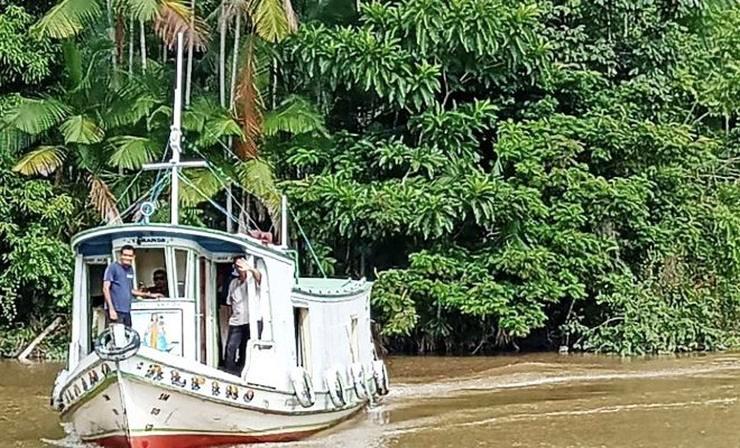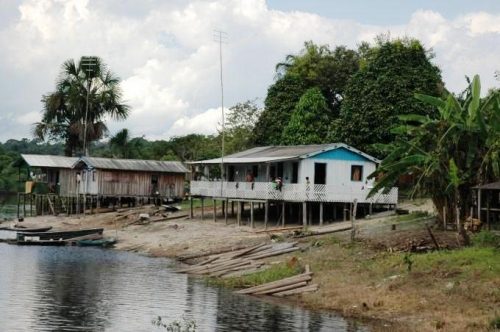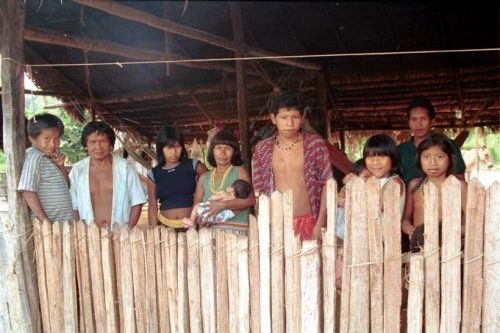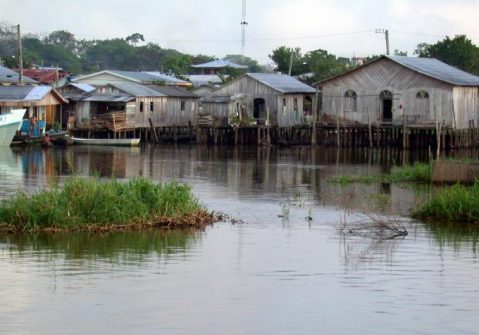Brazil. Our Floating Church.

There are more than 120 communities distributed on the islands of the large Santana archipelago on the Amazon River, in Amapá. The fundamental role of community leaders. An urgent need to have permanent deacons. Two missionaries explain their pastoral activities.
We are in the North of Brazil, in the diocese of Macapá. Father Raul, a PIME missionary, originally from Guinea-Bissau, has been parish priest of the large archipelago for just over a year. The parish has 120 communities in 16 sectors, which take their name from the birds of the region. Some are close to each other, others are not. Therefore, the parish does not have a ‘mother church’ on the mainland, but only an office in the city of Santana and a pastoral centre for meetings in the community of Guajará.

The communities take their name from the birds of the region. File Swm
The communities are located in the State of Pará, in the municipalities of Afuá, Gurupá and Breves. “Our itinerary lasts from ten to fifteen days, and includes training, Mass, and celebrations of the sacraments. Once back in the city, we redo the planning to resume this pastoral itinerary as soon as we can”, explains Father Raul. The Alpino, the boat that the missionaries use to travel, has everything a parish church needs: books and liturgical objects, basic food parcels for needy families and food for the journey.Father Carlos, who is Mexican and has been curate of the parish for six months, says: “Boating on the river is not like driving in the city. Real-time communication is difficult because, on the islands, not everyone has access to the internet. Another challenge is economic because, although the parish is the largest in the diocese, it is the poorest. And there is the problem of guaranteeing our presence in all areas: for example, the community of São Bento, on the island from Roberta to Breves, is about 7-8 hours away by boat and its accessibility depends on the tide”.

The parish has 120 communities. File Swm
Although the logistics are challenging, this is not the biggest concern for the missionaries: “The pastoral difficulty at the moment is the lack of catechists in some communities”, explains Father Raul. “In our absence, it is the local leaders and coordinators who provide assistance and accompany the faithful. When we return, six months after the last visit, they inform us of the community’s difficulties and achievements. Therefore, lay people are indispensable to pastoral activity: if the parish moves forward, it is thanks to their work. In a spirit of synodality, everyone tries to do their part,” says Father Raul.
Elton Monteiro de Costa leads the community of Guajará in the absence of priests. He celebrates the Word on Sundays, visits families and recites the rosary with them. Despite the autonomy, Elton admits: “The arrival of the priests is a bright moment for us. It is the warmth of the emotion of a different community. It is a light that lights things up more and more”. The feeling is mutual, confesses Father Carlos: “The greatest happiness I feel during the visits is when I perceive the joy of the people when the priest arrives. Everyone is waiting anxiously to celebrate the sacraments, receive some training and spend the whole day in community”.
This year the communities worked on the theme of the Synod, convened by Pope Francis: ‘Participation, communion and mission’. There were moments of training and reflection, starting from the answers to the Synod questionnaires. At a local level, the parish has taken a concrete step: “We are putting into practice the three words: participation, communion and mission, uniting small communities to create a spirit of sharing. We work so that this mentality of synodality and openness embraces the entire parish”, says Father Carlos, adding that the majority of people have accepted this new ecclesial configuration and that, with the unification of smaller communities, it becomes easier for missionaries to carry out visits and pastoral work.

The parish is the largest in the diocese. File Swm
The missionary admits that the visits are insufficient for good pastoral and social work in the islands: “It is important to have a fixed place, a house within the territory so that we priests can be more available to anyone in need, and guarantee a service that goes beyond scheduled visits”. This would also allow us to welcome people who come from abroad and want to have a missionary experience on the islands. Father Raul, in turn, imagines another project: the permanent diaconate, as a result of the synod experience. “We have concluded that it is necessary to have direct collaborators in the area during our absence. Not just people to meet local needs, but willing to dedicate their lives as a vocation to the service of the universal Church”. The priests say they are dedicated both to raising awareness and encouraging lay people who feel this calling. Currently, the parish has one active permanent deacon, as well as a candidate in training, and the two missionaries are confident that in the future they will have others: “With the help of deacons, leaders and local coordinators, the pastoral work will be much better”, they conclude. (Open Photo: The Alpino, the boat used by the missionaries.)
Ace Valdez/MM



